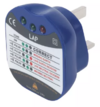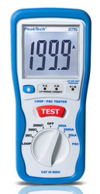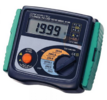There are many references to 50 V, like "Where doubt exists regarding the effectiveness of supplementary equipotential bonding, it shall be confirmed that the resistance R between simultaneously accessible exposed-conductive-parts and extraneous-conductive-parts fulfils the following condition:
R ≤ 50 V/Ia in a.c. systems
R ≤ 120 V/Ia in d.c. systems"
However I would hope some thing would trip well before that point. I was told 25 volt is enough to kill a cow, when working on portable traffic lights, and using the earth wire as a neutral on 55-0-55 volt systems was not an option. This was in the 70's.
But a little maths, and to permit 207 to 253 volt before it triggers auto disconnection will allow the voltage to a
broken PEN to raise by quite a large amount before disconnection.
Inside the Equipotential zone of the home, even with a loss of PEN there should not be a problem, except for the over and under voltage, the difference between neutral and earth with a TN system is only due to volt drop within the cables, so unlikely to exceed a couple of volt.
However to test a socket has a earth connection, only way without removing some protection like covers on the consumer unit is to measure the earth loop impedance, and the neutral loop impedance, which should not be the same. Even if very close to each other. And the socket tester with loop only tests the earth loop impedance, so can't detect if same wire used for earth and neutral, however if the RCD test works, then the socket clearly must have an earth, so testers like these
Do a reasonable job at testing the socket outlets, but one like this

is of very limited use, can check if plug correct way around when using a caravan abroad, and if a wire is completely disconnected, but without the loop and RCD test it can't show that much. But we are looking at under £7 to more like £65 for the one with Loop and RCD test. But for a proper loop impedance and prospective short circuit current tester

they start at around the £150 mark so the EZ365 is cheap when compared with them. Most of the proper loop testers are over £250 so one shown is rather cheap. Did find this one

at under £120 but it only does loop and PSCC so would still need other test gear to do other tests. Insulation testers I have found down to £35 but loop and RCD testers not found any really cheap versions.




